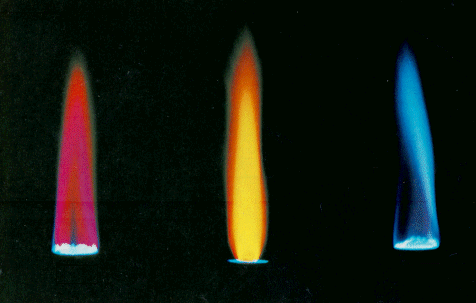5
Summary
Light
travel through space as a wave of radiation energy. The crest-to-crest
distance between waves is the wavelength, and the number of cycles
completed in a second is the frequency.
In
1900 Max Planck introduced the quantum concept. When an object radiates
light, it releases a unit of radiation energy called a photon.
In
1913 Niels Bohr suggested that electrons travel in curricular orbits
about the nucleus. The electron possesses a specific energy and it
is said to occupy an energy level. If an electron changes orbital
in the Bohr model, there is a quantum energy change. The line emission
line spectrum results from electrons dropping from higher energy level
to lower energy levels. Each time an electron drops, a proton of light
is released whose energy correspond to the difference in energy between
the two levels.
In
the 1920's our understanding of electrons in atoms became very sophisticated.
It was proposed that the energy of electrons can be known only in
terms of its probability of being located some where within the atom.
The description gave rise to the Quantum mechanical atom. A location
within the atom where there is a high probability of finding an electron
having certain energy is called an orbital.
